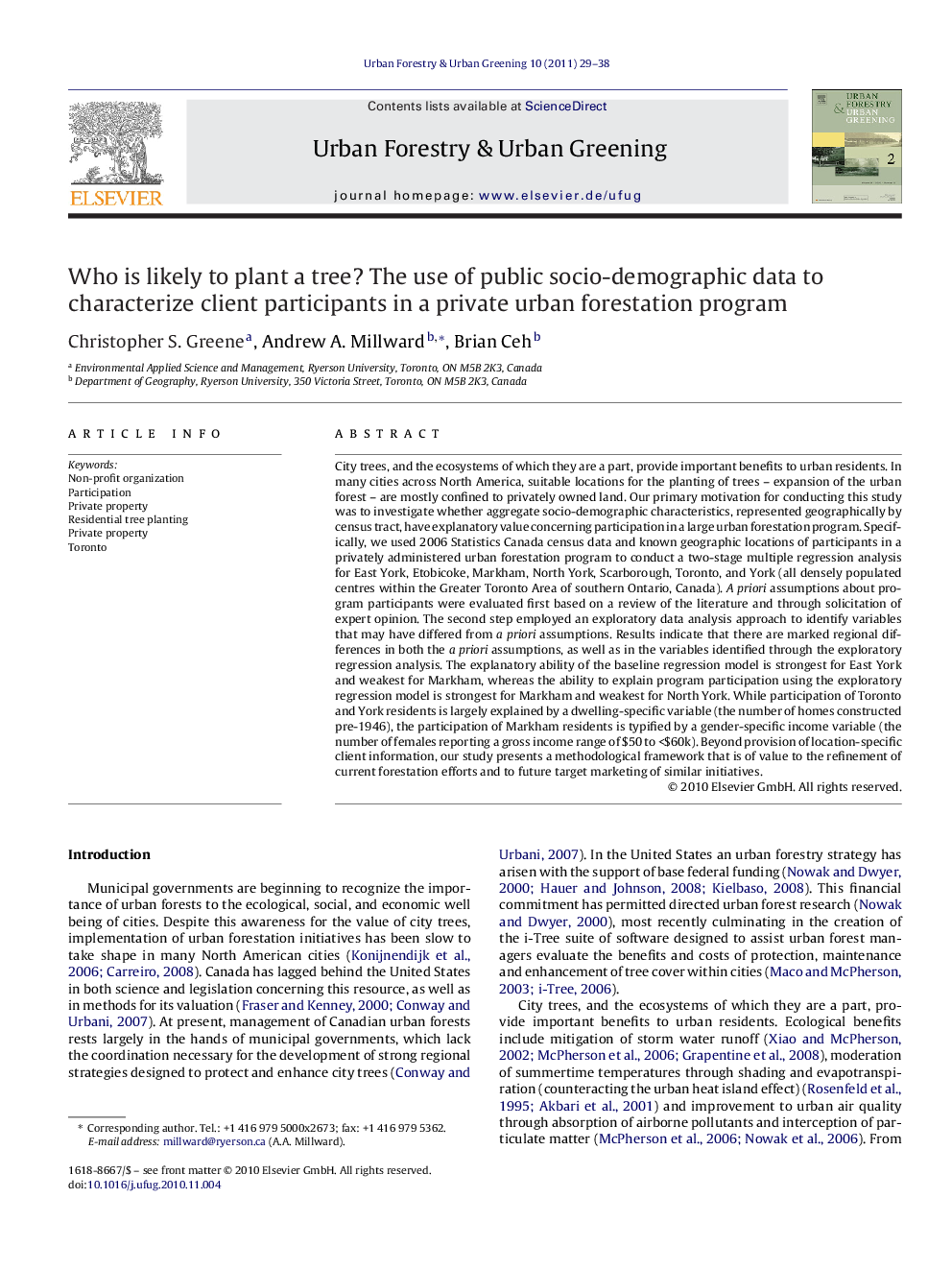| Article ID | Journal | Published Year | Pages | File Type |
|---|---|---|---|---|
| 94335 | Urban Forestry & Urban Greening | 2011 | 10 Pages |
City trees, and the ecosystems of which they are a part, provide important benefits to urban residents. In many cities across North America, suitable locations for the planting of trees – expansion of the urban forest – are mostly confined to privately owned land. Our primary motivation for conducting this study was to investigate whether aggregate socio-demographic characteristics, represented geographically by census tract, have explanatory value concerning participation in a large urban forestation program. Specifically, we used 2006 Statistics Canada census data and known geographic locations of participants in a privately administered urban forestation program to conduct a two-stage multiple regression analysis for East York, Etobicoke, Markham, North York, Scarborough, Toronto, and York (all densely populated centres within the Greater Toronto Area of southern Ontario, Canada). A priori assumptions about program participants were evaluated first based on a review of the literature and through solicitation of expert opinion. The second step employed an exploratory data analysis approach to identify variables that may have differed from a priori assumptions. Results indicate that there are marked regional differences in both the a priori assumptions, as well as in the variables identified through the exploratory regression analysis. The explanatory ability of the baseline regression model is strongest for East York and weakest for Markham, whereas the ability to explain program participation using the exploratory regression model is strongest for Markham and weakest for North York. While participation of Toronto and York residents is largely explained by a dwelling-specific variable (the number of homes constructed pre-1946), the participation of Markham residents is typified by a gender-specific income variable (the number of females reporting a gross income range of $50 to <$60k). Beyond provision of location-specific client information, our study presents a methodological framework that is of value to the refinement of current forestation efforts and to future target marketing of similar initiatives.
